If Goosebumps Were Written For Introverts By @womanatee







If Goosebumps Were Written for Introverts by @womanatee
You May Also Like:
Reality Versus Social Anxiety
If R.L. Stine Wrote Goosebumps Books for Pets
3 Flowcharts for People with Social Anxieties
More Posts from Lilhaileyfoofoo and Others
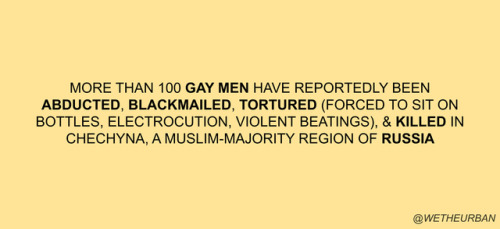



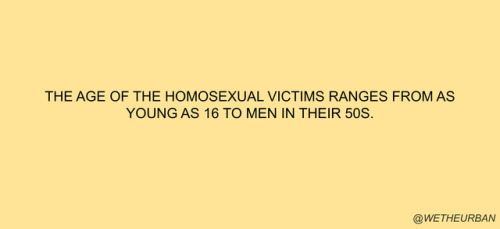




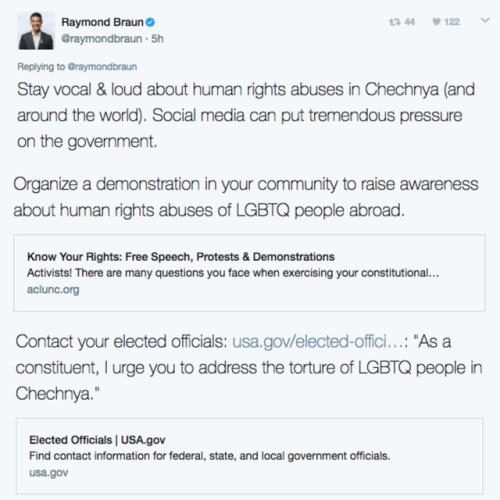
HOW TO HELP TORTURED GAY MEN IN CHECHNYA
We can’t allow this to continue. A petition has also been launched by change.org and signed by tens of thousands of people.
It demands a full investigation of all the facts and unlawful repression in Chechnya of the LGBT population and calls for punishment for the ‘guilty parties’ and the end to the practice of extra-judicial violence.
You can sign that here.
Instagram.com/WeTheUrban
Writer Problems: Plotting
How my friends plot their novels:

How I plot my novels:

Roles on a Pirate Ship
[by Mark Cookman / Tribality 1, 2, 3] @we-are-pirate, @we-are-scarlet-corsair

Officer Roles on a Pirate Ship
If you are running a game with pirates in it, then you should know what the job entails. It’s not all boarding ships, counting booty, and drinking rum like you might think. A great deal of hard work is required to run a sailing ship with a law-abiding crew, let alone one populated by pirates. In this essay we are going to examine the five principle officers on board a pirate ship, their duties, and their responsibilities. This is part one of a three part lesson. In the next lesson we will examine the duties and responsibilities of other officers and crew members with special duties. In the final lesson, we will look at one very special group of crew members that are almost always overlooked. Read on to learn what pirates expected of their primary officers.
The principal officers of a pirate ship were the captain, the quartermaster, the pilot, the boatswain, and the master gunner. On some ships these positions were all elected by an equal vote of the crew and on others the captain picked the crew members he wanted to serve in the positions. The captain on a pirate vessel was almost always elected by an equal vote of the crew. On a privateer vessel this was not very often the case. Privateer captains were often the owners of the ship or were given commission by their monarch to take a vessel to sea. So it follows with the other officers. If the captain was elected, then generally all of the officers were elected. If the captain was appointed or held his position by means of ownership, then generally he picked the officers. In either case, an officer on a pirate ship served at the whim of the crew. Even a man picked by the captain would be booted down to a simple crewman if he could not do his job. For the most part though, a person elevated to serve as one of the principle officers did so for life. The title of this article refers to the fact that most often the authorities that captured, tried, and hung pirates concentrated on the five principle officers of the ship. These officers were generally the most intelligent and skilled crewmen on board the pirate vessel. They were people that everyone else on board the ship admired for their ability to do their job. Diligent action is the mother of respect on board a ship.
Captain
The captain, however he came to his position, was chosen for his leadership, bravery, and cunning. The captain was responsible for the ship and everything aboard her; every item and every man. He was responsible for the overall decisions affecting the ship and her crew. The captain decided where to sail and what to attack. He was the voice of his crew to all beyond the ship. He often led his crew in battle. In terms of daily duties, the captain kept a log of the voyage, managed the affairs of the ship through the officers, and generally served a four to six hour shift at the helm. The captain stayed in power by being successful. As long as there are prizes to plunder, rum to drink, and food to eat, the captain will not be voted out or mutinied against. It is when things get lean that the captain must worry about crew voting him unfit for command.
Quartermaster
The quartermaster (or first mate on a privateer vessel) was the number two man on the ship. He was responsible for enforcing the ship’s articles and administering punishment when necessary. The quartermaster was the trustee of the ship and her crew. He directly represented the crew to the captain. It was his responsibility to serve as a counterbalance to the captain in decisions that might be hazardous to the ship or the crew. A wise captain made no decisions that his first mate didn’t support. The quartermaster took responsibility for prize vessels and picked the treasure that the crew would take from a prize. He was also responsible for counting the booty and splitting the shares. Each day would find him working with his subordinate officers the boatswain, the master gunner, and the master at arms to effectively run the ship. The first mate also served a turn at the helm, generally a four to six hour shift.
Pilot
The pilot was the number three man on the ship and often the most educated. He served as the ship’s navigator and was generally the best all around sailor aboard the ship. He was responsible for plotting the ship’s course and maintaining that course. The pilot maintained all of the ship’s charts and maps as well as the tools of navigation. He was charged with keeping a daily log of every event relating to the sailing of the ship. He recorded the depth, the currents, the wind patterns, the ship’s location, the locations of reefs and sandbars, and the state of the rigging. He reported directly to the captain. The pilot oversaw the work of the sail-master and almost always had at least one assistant (a pilot’s mate) to help him with his duties. The pilot and his mate both served separate shifts at the helm in addition to taking readings from the moon and stars to plot and maintain the course.
Boatswain
The boatswain was the number four man on the ship and often the most feared by the crew. He was in charge of the provisions for the ship. He maintained the stores of food, water, rum, gunpowder, shot, sails, rope, wood, and tar required to keep the ship and crew fit for action. The boatswain also directed the loading of cargo into the hold to maintain the proper ballast to ensure level sailing. He was in charge of keeping the watches on the ship and maintaining discipline among the deck crew. He was responsible for the ship’s longboats and for picking a crew to man the sweeps when the longboats were used. The boatswain was charged with maintaining the ship’s seaworthy status. He oversaw the duties of both the carpenter and the cook. The boatswain generally had a mate to help him with his responsibilities. In general, his duties were to make certain that all the work of running the ship was done. He reported to the quartermaster. The Boatswain was often the most feared man on the ship because his obligations often made him uncompromising. It was his responsibility to keep everything “ship-shape”. Leniency was something the quartermaster might give to the crew, but it was not something the boatswain was in the position to give. Day and night, the boatswain would drive the crew to do whatever work was required. He maintained the watch log and reported any problems to the quartermaster.
Master Gunner
The master gunner was the number five man on the ship. He was responsible for the care and cleaning of all firearms, culverin (deck guns), and cannons on board the ship. He was also responsible for training the crew in the use of both firearms and ship’s weaponry. The master gunner picked and ran the gunnery crew. He reported to the quartermaster, but was responsible to the entire ship to make certain that the cannons hit the declared target. He was also responsible for maintaining the inventory of powder and shot for all of the guns on the ship. The master gunner was the only crew member besides the captain and the quartermaster entrusted to carry a key to the ship’s powder magazine. Additionally, the master gunner often led or picked hunting parties when they were called for. His day to day duties mainly consisted of drilling the gunnery crew and maintaining the guns.

The Next in Line to Hang – More Roles on a Pirate Ship
In this second part of a three part lesson dealing with the crew positions aboard a pirate vessel, we are going to look at the responsibilities of the Sail-master, the Carpenter, the Cook, the Surgeon, and the Master at Arms. These were all lower officer positions and were either voted upon or assigned by the captain as discussed in the first part of this lesson. The sailors who served in these positions were skilled laborers and, as such, their skills were always very much in demand on a ship. They were almost always offered a greater share of the treasure because of their skills. These were definitely crew members that a pirate ship could not function without.
Sail-master
The Sail-master was the most experienced crewman in the rigging and usually one of the best sailors on the ship. He was responsible for maintaining the sails and the rigging. The Sail-master knew every knot, line, rope, block and tackle in the rigging as well as how to repair them all. He was also responsible for training and running the sail crew as well as overseeing the making and patching of sails. The Sail-master took orders from and reported to the pilot.
Carpenter
The Carpenter was a skilled wood worker, often with some shipwright experience, who did all of the woodworking required by the crew. He was primarily responsible for repairing damage to the wooden portions of the ship and for plugging leaks that got too bad. (Ye should understand right now, before ye go to sea, that all ships leak, mates. It’s just when they really leak badly that you have to worry about it.) The Carpenter was also responsible for the construction of barrels and crates, as needed, to store cargo, as well as maintaining the tools of his trade. He took orders from and reported to the Boatswain.
Cook
The Cook was one of the most important of the lower officers. He was in charge of all matters relating to food on the ship. He made certain there was enough food, water, and rum on board for the planned cruise. He cooked the meals and suggested rationing when it was necessary. The Cook butchered the meat brought back by hunting parties and was the only man trusted to light a fire below decks. He maintained the necessary tools for both cooking and butchering. The Cook took orders from and reported to the Boatswain.
Surgeon
The Surgeon was likely one of the toughest men on the ship. He served as the barber/doctor/emergency surgeon for the entire crew. He was equally capable of shaving your beard and cutting off your damaged leg. The Surgeon dealt with not only the sick and the wounded, but also the dead. He, like the other lower officers, was responsible for maintaining the necessary tools of his trade. The Surgeon took his orders from and reported to the Quartermaster. It was rare for a ship to have a real doctor and it was common for the carpenter or the cook to fill this role as needed.
Master at Arms
The Master at Arms was often the most skilled warrior on the crew. He was responsible for training the crew in hand to hand combat. He also led the ship’s boarding parties and hunting parties when they were necessary. The Master at Arms position was not a separate position on every vessel and often these responsibilities fell to the Quartermaster. When the Master at Arms position was filled on a ship, he took orders from and reported to the Quartermaster.
These 5 core positions represent the Non-Commissioned Officers of a pirate or privateer ship. These men all commanded other men on work details and so their words carried great sway with the crew. It was often from among these men that the next captain was chosen when a captain lost his position through a vote of no confidence. Thus, these were the men that the captain had to keep loyal to him to stay in command of the ship.
And Hang the Musikers, Too – Even More Roles on a Pirate Ship
In this article, we will be looking at the makeup of the crew itself. Remember that the only rule with pirates is that there are no rules; no two crews of any two pirate ships were exactly the same. Even so, we can narrow down some roles common to pirate/privateer crews based upon the jobs that must be done aboard ship. Most simply put, pirate crews are a mixture of brutes, gunners, swabbies, and musikers. Let’s examine each category in turn.
Brutes
A great deal of hard work and heavy hauling is involved in just sailing a tall-masted ship. In strong winds the canvas sails must be man-handled by a deck crew that is stronger. Loading and unloading supplies, most especially cannons or chests of gold, requires a number of strong backs. This is why every ship has its share of brutes – big, strong men capable of handling themselves no matter the work or the fight. In addition to the tasks already mentioned, brutes would be key men in hunting parties, ship boarding, and raiding groups as well. Keep in mind that not all brutes need to be hulking bruisers. A wiry-tough and dexterous hunter, skilled with both blades and long rifle, could be a brute as well. Brutes, no matter their size, do not shrink from a hard task. Men of this sort make up perhaps as much as ½ of a pirate crew, but they will be mixed among the gunners and swabbies, not a stand alone corp. Most of the men on a pirate or privateer ship were probably gunners.
Gunners
Depending upon the size of their shot, each cannon required a crew of either 3 or 4 men to load and fire it. So a sloop carrying 4 small guns per side would require a minimum of 24 men to fully maintain them and that does not include the officers directing the cannon fire. On a large ship, like Blackbeard’s Queen Anne’s Revenge, a full gun crew would be 160 men dedicated only to firing the cannons. (It is important to note here that Blackbeard had a total crew compliment of 125 on board the Queen Anne’s Revenge.) These crewmen would have to be available 24/7 to do their job whenever required, but otherwise might have no duties on the ship. There was double-duty in most crews though. Most pirate ships didn’t keep a full compliment of gunners like warships of the time did because fewer crew members meant fewer shares and that meant more money for everyone when the treasure was split. Gunners could make up between 1/3 to 2/3 of a crew.
Swabbies
Swabbies, or actual trained sailors, are the crew members responsible for handling the rigging and the sails to keep the ship moving. These are the guys and gals who climb the ratlines into the rigging and walk the spars that jut from the masts. Swabbies sometimes fight from the highest position that they can get to on their own ship and then leap into the rigging of the enemy vessel when boarding. Often dexterous fighters, swabbies are known for leaping into the fray, but sometimes they hide in the rigging as deadly snipers. It might be surprising to discover that skilled sailors usually comprised less than 1/3 of the total crew compliment of the ship.
Musikers
It is difficult to prove that “musikers”, or musicians as we call them, were ever a stand-alone part of a pirate crew. However, two excellent examples from the pirate period demonstrate that they have been a common part of most ships of war, pirate and privateer ships included. The first example is from the early Seventeenth century. In Captain John Smith’s advice concerning how to conduct a one-on-one naval engagement he remarks when preparing to board one should, “… sound Drums and Trumpets, and Saint George for England.” The second example comes from the early Eighteenth century. In the articles of Captain Bartholomew Roberts it is stated: “The Musikers to have Rest on the Sabbath Day, but the other six Days and Nights, none without special Favour.” When thinking about the musicians on board a ship in the 16th to 18th centuries, one must not think of a band. That would be far too organized a concept. There is no way to know how many crew members may have been musicians, but one assumes that the number is not large.
It is likely that ships of this period had crew members who owned musical instruments as varied as brass horns, mouth harps, fiddles, bag pipes and accordions. Furthermore, sailors could gather numerous instruments from the various ports of call their ship made. Examples here are numerous: cowhide and goatskin drums from Africa, dried gourd maracas from Cuba, bamboo drums and flutes from Hispaniola, and even tambourines from Morocco. Pause a moment and consider the combined sounds of all of the instruments mentioned here. Now you know why a band is not the idea you want to have. The musicians were popular with the crew, as they were entertainment as well as a valuable battle element. The musicians played during meal times and during work breaks allowing the crew some entertainment to break the monotony of long hours of tiring work. This boost in moral was welcome at anytime, but was perhaps the most effective when used in battle.
From stories of Bartholomew Roberts crew and others, we know that when a ship with musicians approached another ship with the intention to fight, the effects of the music could be terrifying to the enemy. The musicians would play marches and other martial music. There were drum rolls, trumpet and bugle calls, and perhaps even a piper given the nationality of the crew. Add to this the noise of the ship’s cook beating upon his pots and pans and the crew stamping their feet or beating their weapons against the ship. Finally top this off with the sounds of shouting, screaming, and shooting, both pistols and rifles as well as cannons and deck guns. Your imagination can supply you with the details of the scene. The intended result is achieved: the morale aboard the pirate vessel is raised to a fevered pitch while the morale of their intended prize is shaken. So do not forget that pirates and privateers know the value of bardic inspiration when you run those encounters.
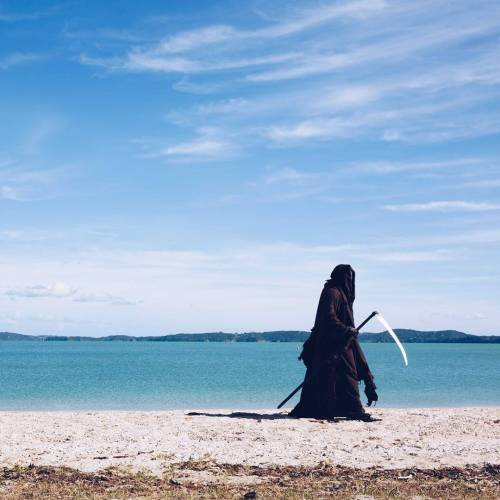
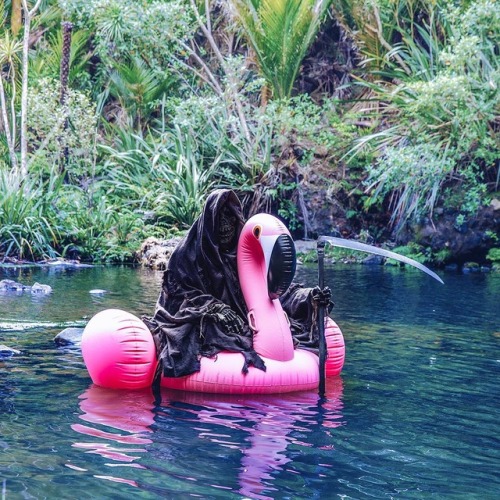
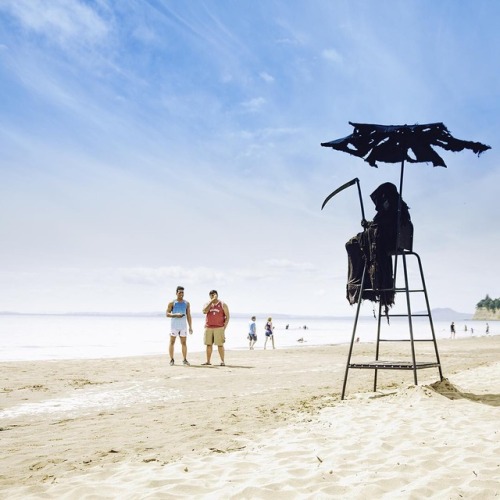
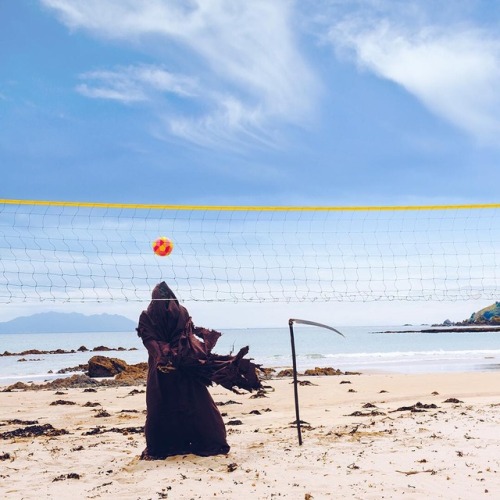
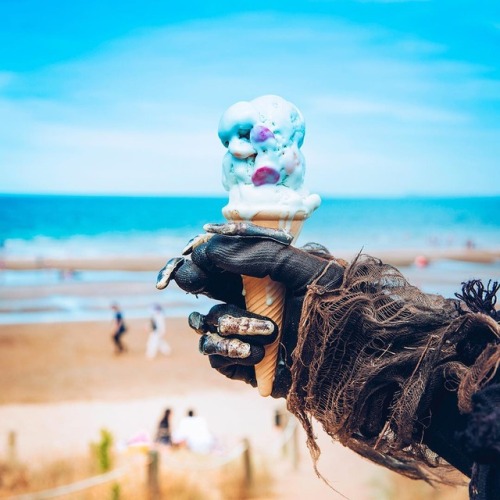
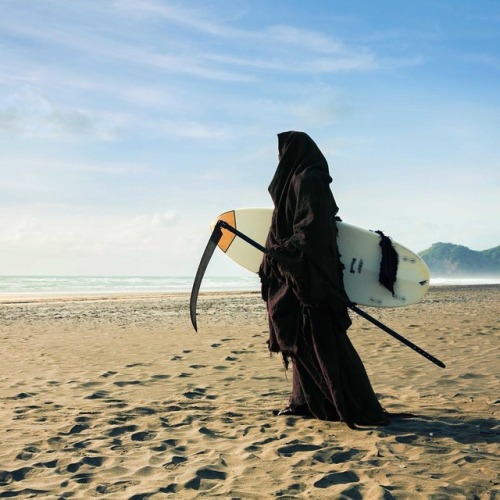
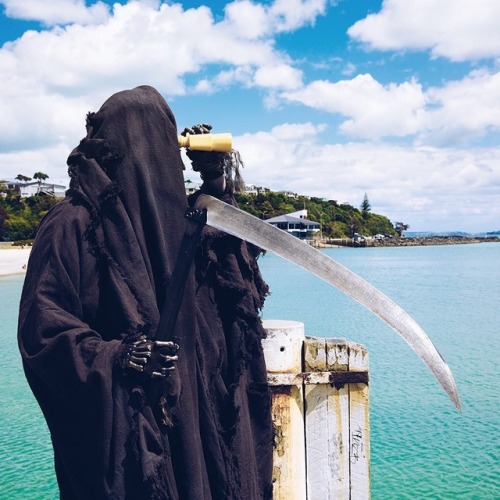
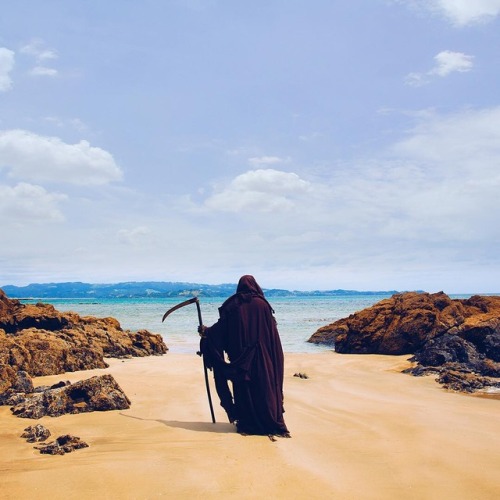

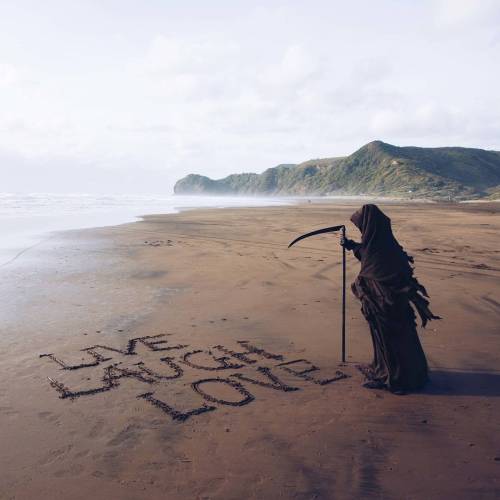
New Zealand’s new water safety mascot is amazing and his instagram is a gift
Naming a South Asian Character
“I need a name for a South Asian character”
We’re going to need a little more information than that…
Please see the following maps of South Asia:


Image description: Two maps of South Asia. The top map depicts the South Asian region, including Afghanistan with color-coding of different regions by 8 color-coded language groups. The bottom depicts the official state/ province/ languages and scripts for countries in the South Asian region, excluding Afghanistan. See end of post for detailed image description under the cut.
(Links: Top Map, Bottom Map)
That’s a lot of languages, right?
Names in South Asian cultures are primarily dictated by religion and language. While there’s some overlap between cultures, we can make an educated guess of someone’s ethnicity & religion based on their name. For example:
Simran Dhillon … is a Punjabi Sikh.
Priyanka Ghosh … is a Bengali Hindu
Maya Srinivasan … is a Tamilian Hindu.
Harsh Patel … is a Gujarati Hindu.
Amin Usmani … is a Muslim from a traditionally Urdu speaking community.
Teresa Fernandes … is a Goan Christian.
Behind the Name is a good place to start looking as they state the specific language the name is from. As for religion, there are more factors to consider.
Sikhs
Sikh first names are gender neutral. The 10th Sikh guru designated Singh (meaning lion, for men) and Kaur (meaning heir to the throne, for women) as Sikh surnames. These surnames were designed to be equalizers within Sikh communities. However, many Sikhs keep their Punjabi surnames (many of these surnames are now primarily associated with Sikhs) and use Singh and Kaur as a middle name (eg. Ranjit Kaur Shergill, Amrit Singh Cheema). More devout Sikhs use only Singh and Kaur or use the same format legally but do not share their surnames.
Sikh first names are derived from gurbani (Sikh holy texts), so they are often uniform across cultures. Most Sikhs who aren’t Punjabi use Singh & Kaur or cultural surnames in the same format. The latter is usually seen among Afghan & Delhiite Sikh communities. While most changed their surnames to Singh & Kaur, some families still kept the surnames they had before they converted from Islam and Hinduism (eg. Harpreet Singh Laghmani, Jasleen Kaur Kapoor).
If you’re stuck on a surname for a Sikh character, Singh for men and Kaur for women is the safest way to go regardless of ethnicity.
Good resources for Sikh names can be found here:
https://www.sikhs.org/names.htm
http://www.sikhwomen.com/SikhNames/
Christians
South Asian Christians naming conventions depend largely on who brought Christianity to the region and when. For example, Christianity was largely brought to Goa by Portuguese Catholics so you’ll see Portuguese surnames, while many Christians in the Seven Sister States didn’t change their names. South Asian Christians will also often have Christian first names, either in Portuguese or in English.
Hindus, Jains, castes and gotras
Hinduism is the majority religion in India and the South Asian region overall. A key thing that many newcomers overlook when writing about Hindus is that rather like feudal Europe, a person’s last name can also tell you what their family used to do because of the caste system. Both Hindus and Jains employ gotras (or lineage systems) designed to keep people from the same patrilineal line from marrying each other. Thus, if your Hindu character is a Vaishya (tradesman/ merchant class), but you have chosen a last name for them related to farming, or if your Kshatriya (warrior) character has a last name that means bureaucrat, you’ve made a mistake. Most Hindus and Jains will have last names derived from Sanskrit, or a language with Sanskrit roots.
A note on middle names: in South India, Hindus will often use the father’s first name for the child’s middle name.
For what it is worth, South Asia is hardly the only region to have these particular features. Japanese society until the end of the Edo era was heavily segregated by caste, and to this day, many families with samurai last names occupy relative positions of privilege compared to other castes, even though the Japanese caste system ended with the Meiji Restoration.
A note of caution: Baby name websites tend to be inaccurate for Hindu names, often confusing Farsi and Arabic-derived Urdu names with the more traditional Sanskrit-derived names. Behind the Name is by far the most accurate website, but it doesn’t hurt to check multiple sources. For Hindu and Jain surnames associated with different castes, regions and gotras, Wikipedia is surprisingly thorough.
Muslims
Islam is the majority religion in Pakistan and Bangladesh as well as the second largest religion in India, but the differing ethnicities and arrival periods of Muslims in South Asia over the course of history can have a significant impact on a character’s name. For example, think of when your character’s family will have arrived in South Asia or converted to Islam:
During the Delhi Sultanate, when Hindustani would have been spoken?
Under the Mughals when Persian was more common?
Are they from Bangladesh and thus speak Bengali?
Do they have ancestors from Afghanistan or Swat Valley, and thus have Pashto last names?
Does the family speak Urdu?
All of these will impact what their name might reasonably be. As a general rule, Muslims will have last names that are in Farsi/ Persian, Urdu, Arabic and Bengali. Bangladeshi Muslims may have Hindu names (both first and last) as well.
Buddhists
When discussing Buddhists in South Asia, we are primarily talking about Nepal and Sri Lanka. The majority languages in these countries are Nepali and Sinhala, respectively. Both languages are part of the Indo-Aryan language family, and like many Indo-Aryan languages, show heavy Sanskrit influence.
Others
Don’t forget that India also has a large number of lesser known minority religions, including Judaism, Zoroastrianism, Tibetan Buddhism and a host of indigenous religions.
Judaism: There are a number of historical Jewish enclaves in India, as the result of specific waves of migration. Like South Asian Muslim names, Jewish last names will vary depending on the ethnicity and arrival period for each particular wave of Jewish diaspora.
Zoroastrianism: People who practice Zoroastrianism are likely to have Farsi last names.
Tibetan Buddhism: Tibetan Buddhists will obviously have Tibetan names and are often a part of the Tibetan diaspora who entered India as refugees during the Chinese government’s invasion of Tibet.
In Conclusion
An in-depth coverage of name etymology in South Asia would probably be the size of an encyclopaedia. The above is hardly exhaustive; we haven’t scratched the surface of the ethnic and linguistic variations in any of the South Asian countries displayed on the maps above. We hope, however, that it motivates you to research carefully and appreciate the cultural diversity South Asia has to offer. Just like in any setting where issues of lineage are plainly displayed by a person’s name, names in South Asia tell stories about where a person is from, what language they speak, and what their ancestors might have done, even if this has little bearing on the character themselves. It may seem a little elaborate to try and imagine the ancestors of your character before you even decide who your character is, but the reality is that most South Asians know these things instinctively, and whether or not you do your due diligence will be part of how we judge your work.
Name a thing to fight over, and South Asians have probably fought over it at one point or another, whether it be religion, ethnicity, language, or caste. However, one thing many South Asians have in common is pride in our individual origins. Respecting this love of identity will be invaluable as you plan your story.
At the end of the day, there is no substitute for actually talking to people who share your character’s background. We will always recommend having someone from the community you’re writing about check your naming.
– Mods SK and Marika
Keep reading
vitiligo notes for artists
I’ve noticed that vitiligo has been becoming more common in art, and I think that’s really cool! But as a person with vitiligo, and an artist, there are few mistakes I’ve noticed in people’s portrayal of the condition that I wanna address.
1. It’s not random. Vitiligo tends to appear more often in specific places, like around the mouth or eyes, the belly button, as well as on the hands and feet. It also tends to be at least a little bit symmetrical.
2. It doesn’t change your eye color. However in some cases it can cause patches of hair to turn white or blonde.
3. It changes over time. As a kid I had tons of vitiligo spots on my feet and legs, but they eventually faded. For a long time I didn’t have any until I developed a spot above my right eye about a year ago. So if you’re portraying a character at different points in their life, their vitiligo should change too.
4. All skin colors can have vitiligo. I’ve noticed on Picrew and other character maker games vitiligo will sometimes only be an option for characters with dark skin. Obviously it won’t be as obvious on light skin, but unless your character is a person with albinism it should still show up.
that’s all I’ve got for now, if I think of more I might make another post :)
How to Write Indigenous Characters Without Looking like a Jackass:
Boozhoo (hello) Fallout fandom! I'm a card-carrying Anishinaabe delivering this rough guide about writing Indigenous characters because wow, do I see a lot of shit.
Let's get something out of the way first: Fallout's portrayal of Indigenous people is racist. From a vague definition of "tribal" to the claims of them being "savage" and "uncivilized" mirror real-world stereotypes used to dehumanize us. Fallout New Vegas' narrated intro has Ron Perlman saying Mr. House "rehabilitated" tribals to create New Vegas' Three Families. You know. Rehabilitate. As if we are animals. Top it off with an erasure of Indigenous people in the American Southwest and no real tribe names, and you've got some pretty shitty representation. The absence of Native American as a race option in the GECK isn't too great, given that two Native characters are marked "Caucasian" despite being brown. Butch Deloria is a pretty well-known example of this effect. (Addendum: Indigenous people can have any mix of dominant and recessive traits, as well as present different phenotypes. What bothers me is it doesn't accommodate us or mixed people, which is another post entirely.)
As a precautionary warning: this post and the sources linked will discuss racism and genocide. There will also be discussion of multiple kinds of abuse.
Now, your best approach will be to pick a nation or tribe and research them. However, what follows will be general references.
Terms that may come up in your research include Aboriginal/Native Canadian, American Indian/Native American, Inuit, Métis, and Mestizo. The latter two refer to cultural groups created after the discovery of the so-called New World. (Addendum made September 5th, 2020: Mestizo has negative connotations and originally meant "half breed" so stick with referring to your mixed Latino and Indigenous characters as mixed Indigenous or Native.)
As a note, not every mixed person is Métis or Mestizo. If you are, say, Serbian and Anishinaabe, you would be mixed, but not Métis. Even the most liberal definition caps off at French and British ancestry alongside Indigenous (some say Scottish and English). Mestizo works the same, since it refers to descendants of Spanish conquistadors/settlers and Indigenous people.
Trouble figuring out whose land is where? No problem, check out this map.
Drawing
Don't draw us with red skin. It's offensive and stereotypical.
Tutorial for Native Skintones
Tutorial for Mixed Native Skintones
Why Many Natives Have Long Hair (this would technically fit better under another category, but give your Native men long hair!)
If You're Including Traditional Wear, Research! It's Out There
Languages
Remember, there are a variety of languages spoken by Indigenous people today. No two tribes will speak the same language, though there are some that are close and may have loan words from each other (Cree and Anishinaabemowin come to mind). Make sure your Diné (you may know them as Navajo) character doesn't start dropping Cree words.
Here's a Site With a Map and Voice Clips
Here's an Extensive List of Amerindian Languages
Keep in mind there are some sounds that have no direct English equivalents. But while we're at it, remember a lot of us speak English, French, Spanish, or Portuguese. The languages of the countries that colonized us.
Words in Amerindian languages tend to be longer than English ones and are in the format of prefix + verb + suffix to get concepts across. Gaawiin miskwaasinoon is a complete sentence in Anishinaabemowin, for example (it is not red).
Names
Surprisingly, we don't have names like Passing Dawn or Two-Bears-High-Fiving in real life. A lot of us have, for lack of better phrasing, white people names. We may have family traditions of passing a name down from generation to generation (I am the fourth person in my maternal line to have my middle name), but not everyone is going to do that. If you do opt for a name from a specific tribe, make sure you haven't chosen a last name from another tribe.
Baby name sites aren't reliable, because most of the names on there will be made up by people who aren't Indigenous. That site does list some notable exceptions and debunks misconceptions.
Here's a list of last names from the American census.
Cowboys
And something the Fallout New Vegas fans might be interested in, cowboys! Here's a link to a post with several books about Black and Indigenous cowboys in the Wild West.
Representation: Stereotypes and Critical Thought
Now, you'll need to think critically about why you want to write your Indigenous character a certain way. Here is a comprehensive post about stereotypes versus nuance.
Familiarize yourself with tropes. The Magical Indian is a pretty prominent one, with lots of shaman-type characters in movies and television shows. This post touches on its sister tropes (The Magical Asian and The Magical Negro), but is primarily about the latter.
Say you want to write an Indigenous woman. Awesome! Characters I love to see. Just make sure you're aware of the stereotypes surrounding her and other Women of Color.
Word to the wise: do not make your Indigenous character an alcoholic. "What, so they can't even drink?" You might be asking. That is not what I'm saying. There is a pervasive stereotype about Drunk Indians, painting a reaction to trauma as an inherent genetic failing, as stated in this piece about Indigenous social worker Jessica Elm's research. The same goes for drugs. Ellen Deloria is an example of this stereotype.
Familiarize yourself with and avoid the Noble Savage trope. This was used to dehumanize us and paint us as "childlike" for the sake of a plot device. It unfortunately persists today.
Casinos are one of the few ways for tribes to make money so they can build homes and maintain roads. However, some are planning on diversifying into other business ventures.
There's a stereotype where we all live off government handouts. Buddy, some of these long-term boil water advisories have been in place for over twenty years. The funding allocated to us as a percentage is 0.39%: less than half a percent to fight the coronavirus. They don't give us money.
"But what about people claiming to be descended from a Cherokee princess?" Cherokee don't and never had anything resembling princesses. White southerners made that up prior to the Civil War. As the article mentions, they fancied themselves "defending their lands as the Indians did".
Also, don't make your Indigenous character a cannibal. Cannibalism is a serious taboo in a lot of our cultures.
Our lands are not cursed. We don't have a litany of curses to cast on white people in found footage films. Seriously. We have better things to be doing. Why on earth would our ancestors be haunting you when they could be with their families? Very egotistical assumption.
Indigenous Ties and Blood Quantum
Blood quantum is a colonial system that was initially designed to "breed out the Indian" in people. To dilute our bloodlines until we assimilated properly into white society. NPR has an article on it here.
However, this isn't how a vast majority of us define our identities. What makes us Indigenous is our connections (or reconnection) to our families, tribes, bands, clans, and communities.
Blood quantum has also historically been used to exclude Black Natives from tribal enrollment, given that it was first based on appearance. So, if you looked Black and not the image of "Indian" the white census taker had in his brain, you were excluded and so were your descendants.
Here are two tumblrs that talk about Black Indigenous issues and their perspectives. They also talk about Aboriginal and Torres Strait Islander people of Australia.
However, if you aren't Indigenous, don't bring up blood quantum. Don't. This is an issue you should not be speaking about.
Religion
Our religions are closed. We are not going to tell you how we worship. Mostly because every little bit we choose to share gets appropriated. Smudging is the most recent example. If you aren't Indigenous, that's smoke cleansing. Smudging is done in a specific way.
Now, a lot of us were forcibly converted. Every residential school was run by Christians. So plenty of us are Catholic, Baptist, Anglican, Lutheran, etc. Catholicism in Latin America also has influence from the Indigenous religions in that region.
Having your Indigenous character pray or carry rosaries wouldn't be a bad thing, if that religion was important to them. Even if they are atheist, if they lived outside of a reserve or other Indigenous communities, they might have Christian influences due to its domination of the Western world.
Settler Colonialism and the White Savior Trope
Now we've come to our most painful section yet. Fallout unintentionally has an excellent agent of settler-colonialism, in particular the Western Christian European variety, in Caesar's Legion and Joshua Graham.
(Addendum: Honest Hearts is extremely offensive in its portrayal of Indigenous people, and egregiously shows a white man needing to "civilize" tribals and having to teach them basic skills. These skills include cooking, finding safe water, and defending themselves from other tribes.)
Before we dive in, here is a post explaining the concept of cultural Christianity, if you are unfamiliar with it.
We also need to familiarize ourselves with The White Man's Burden. While the poem was written regarding the American-Philippine war, it still captures the attitudes toward Indigenous folks all over the world at the time.
As this article in Teen Vogue points out, white people like to believe they need to save People of Color. You don't need to. People of Color can save themselves.
Now, cultural Christianity isn't alone on this side of the pond. Writer Teju Cole authored a piece on the White Savior Industrial Complex to describe mission trips undertaken by white missionaries to Africa to feed their egos.
Colonialism has always been about the acquisition of wealth. To share a quote from this paper about the ongoing genocide of Indigenous peoples: "Negatively, [settler colonialism] strives for the dissolution of native societies. Positively, it erects a new colonial society on the expropriated land base—as I put it, settler colonizers come to stay: invasion is a structure not an event. In its positive aspect, elimination is an organizing principal of settler-colonial society rather than a one-off (and superseded) occurrence. The positive outcomes of the logic of elimination can include officially encouraged miscegenation, the breaking-down of native title into alienable individual freeholds, native citizenship, child abduction, religious conversion, resocialization in total institutions such as missions or boarding schools, and a whole range of cognate biocultural assimilations. All these strategies, including frontier homicide, are characteristic of settler colonialism. Some of them are more controversial in genocide studies than others." (Positive, here, is referring to "benefits" for the colonizers. Indigenous people don't consider colonization beneficial.)
An example of a non-benefit, the Church Rock disaster had Diné children playing in radioactive water so the company involved could avoid bad publicity.
Moving on, don't sterilize your Indigenous people. Sterilization, particularly when it is done without consent, has long been used as a tool by the white system to prevent "undesirables" (read, People of Color and disabled people) from having children. Somehow, as of 2018, it wasn't officially considered a crime.
The goal of colonization was to eliminate us entirely. Millions died because of exposure to European diseases. Settlers used to and still do separate our children from us for reasons so small as having a dirty dish in the sink. You read that right, a single dirty dish in your kitchen sink was enough to get your children taken and adopted out to white families. This information was told to me by an Indigenous social work student whose name I will keep anonymous.
It wasn't until recently they made amendments to the Indian Act that wouldn't automatically render Indigenous women non-status if they married someone not Indigenous. It also took much too long for Indigenous families to take priority in child placement over white ones. Canada used to adopt Indigenous out to white American families. The source for that statement is further down, but adoption has been used as a tool to destroy cultures.
I am also begging you to cast aside whatever colonialist systems have told you about us. We are alive. People with a past, not people of the past, which was wonderfully said here by Frank Waln.
Topics to Avoid if You Aren't Indigenous
Child Separation. Just don't. We deserve to remain with our families and our communities. Let us stay together and be happy that way.
Assimilation schools. Do not bring up a tool for cultural genocide that has left lasting trauma in our communities.
W/ndigos. I don't care that they're in Fallout 76. They shouldn't be. Besides, you never get them right anyway.
Sk/nwalkers. Absolutely do not. Diné stories are not your playthings either.
I've already talked about drugs and alcohol. Do your research with compassion and empathy in mind. Indigenous people have a lot of pain and generational trauma. You will need to be extremely careful having your Indigenous characters use drugs and alcohol. If your character can be reduced to their (possible) substance abuse issues, you need to step back and rework it. As mentioned in Jessica Elm's research, remember that it isn't inherent to us.
For our final note: remember that we're complex, autonomous human beings. Don't use our deaths to further the stories of your white characters. Don't reduce us to some childlike thing that needs to be raised and civilized by white characters. We interact with society a little differently than you do, but we interact nonetheless.
Meegwetch (thank you) for reading! Remember to do your research and portray us well, but also back off when you are told by an Indigenous person.
This may be updated in the future, it depends on what information I come across or, if other Indigenous people are so inclined, what is added to this post.
Irish people; The faeries aren’t real
Irish people; No fucking way will I go in that faerie ring

looks like she needs to let the soup cool down before she gets burned. Oh too late!
could u fite the derps
Has this been done its probably been done whatever idgaf u can leave a complaint in the complaints box but I DONT CHECK THAT SHIT
ChilledChaos: Despite the fact he's a massive fucking nerd with an aversion to bugs and spiders he's also 6"2 and really really buff so fight with caution. His skype picture is him wearing a sombrero I think you're safe. You'd probably win if you brought a cockroach.
GaLmHD: He's sarcastic beyond belief and you'll probably end up getting confused on why you're fighting him in the first place. He's also really smart so you should probably not fight.
TehSmarty: Fuck that loser up he might be tall but he's a fuckin' dweeb you could 100% take him beat him with his own selfie stick then claim your title as the new card czar
ZeRoyalViking: You fucking sick bastard why would you even think about fighting Ze ofc you could 1000% take him but congratulations you're a dickbag for beating up pure sunshine.
TomFawkes: Abort. Abort. Do not fight. Tom is tall and mysterious and would probably pull some double roundhouse chuck norris shit do not fight abandon the pit immediately.
-
 worlddominator1world liked this · 7 years ago
worlddominator1world liked this · 7 years ago -
 ex-bookjunky liked this · 7 years ago
ex-bookjunky liked this · 7 years ago -
 pearlsteaparty liked this · 7 years ago
pearlsteaparty liked this · 7 years ago -
 iamhisgloriouspurpose liked this · 7 years ago
iamhisgloriouspurpose liked this · 7 years ago -
 decadentpidgeon reblogged this · 7 years ago
decadentpidgeon reblogged this · 7 years ago -
 morbidfinwe liked this · 7 years ago
morbidfinwe liked this · 7 years ago -
 xxxprettydeadgirlxxx reblogged this · 7 years ago
xxxprettydeadgirlxxx reblogged this · 7 years ago -
 xxxprettydeadgirlxxx liked this · 7 years ago
xxxprettydeadgirlxxx liked this · 7 years ago -
 mastreworld reblogged this · 7 years ago
mastreworld reblogged this · 7 years ago -
 nemiworshipper reblogged this · 7 years ago
nemiworshipper reblogged this · 7 years ago -
 nemiworshipper liked this · 7 years ago
nemiworshipper liked this · 7 years ago -
 mosellegreen reblogged this · 7 years ago
mosellegreen reblogged this · 7 years ago -
 mosellegreen liked this · 7 years ago
mosellegreen liked this · 7 years ago -
 hellraiserdvine reblogged this · 8 years ago
hellraiserdvine reblogged this · 8 years ago -
 hellraiserdvine liked this · 8 years ago
hellraiserdvine liked this · 8 years ago -
 severus-the-great-slytherin liked this · 8 years ago
severus-the-great-slytherin liked this · 8 years ago -
 okii-da-sexii-beest liked this · 8 years ago
okii-da-sexii-beest liked this · 8 years ago -
 dawnsmithblog liked this · 8 years ago
dawnsmithblog liked this · 8 years ago -
 virginknees reblogged this · 8 years ago
virginknees reblogged this · 8 years ago -
 virginknees liked this · 8 years ago
virginknees liked this · 8 years ago -
 anatomyofwords liked this · 8 years ago
anatomyofwords liked this · 8 years ago -
 bilela reblogged this · 8 years ago
bilela reblogged this · 8 years ago -
 bilela liked this · 8 years ago
bilela liked this · 8 years ago -
 4ndroid7 liked this · 8 years ago
4ndroid7 liked this · 8 years ago -
 voyage-of-silence liked this · 8 years ago
voyage-of-silence liked this · 8 years ago -
 gostmann reblogged this · 8 years ago
gostmann reblogged this · 8 years ago -
 post-futurism liked this · 9 years ago
post-futurism liked this · 9 years ago -
 liketheashesofflags reblogged this · 9 years ago
liketheashesofflags reblogged this · 9 years ago -
 callmeanonuniverse-blog liked this · 9 years ago
callmeanonuniverse-blog liked this · 9 years ago -
 4xsteel liked this · 9 years ago
4xsteel liked this · 9 years ago -
 adrianxxii liked this · 9 years ago
adrianxxii liked this · 9 years ago -
 exalteranima reblogged this · 9 years ago
exalteranima reblogged this · 9 years ago -
 moavdela reblogged this · 9 years ago
moavdela reblogged this · 9 years ago -
 endlessdaysandendlessnights liked this · 9 years ago
endlessdaysandendlessnights liked this · 9 years ago -
 the-techguy1 reblogged this · 9 years ago
the-techguy1 reblogged this · 9 years ago -
 sleepyleftistdemon reblogged this · 9 years ago
sleepyleftistdemon reblogged this · 9 years ago -
 florenceduvet liked this · 9 years ago
florenceduvet liked this · 9 years ago -
 sleepyleftistdemon liked this · 9 years ago
sleepyleftistdemon liked this · 9 years ago -
 princess-parfait-blog reblogged this · 9 years ago
princess-parfait-blog reblogged this · 9 years ago -
 iridescent-opulescent liked this · 9 years ago
iridescent-opulescent liked this · 9 years ago

I mostly reblog writing and art related resources here. BLMMy main account is FoofsterRoonie. My art blog is FoofsterArtAnd my writing blog is Foofsterwriting:)
197 posts